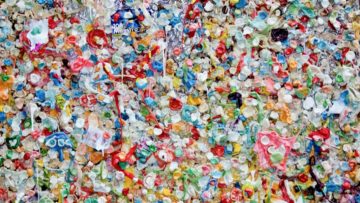Shelley Fan in Singularity Hub:
 The first time I heard about the Great Pacific Garbage Patch, I thought it was a bad joke.
The first time I heard about the Great Pacific Garbage Patch, I thought it was a bad joke.
My incredulity soon turned to horror when I realized it’s real. The garbage patch, also known as the Pacific trash vortex, is a massive collection of debris in the North Pacific Ocean. Although made up of all sorts of human-generated waste, the main components are tiny pieces of microplastic. From straws to trash bags, we use an astonishing amount of plastic—which often ends up in delicate ocean (and other) ecosystems. According to the Center for Biological Diversity, a nonprofit organization for protecting endangered species based in Arizona, at current rates plastic is set to outweigh all fish in the ocean by 2050.
A new study wants to turn the tide with synthetic biology. By engineering genetic circuits into a bacterial “consortium,” the team reprogrammed two strains to not only destroy polluting plastics—but to also transform the toxic waste into useful biodegradable material. Environmentally friendly and versatile, these upcycled plastics can be used to manufacture foams, adhesives, or even nylon—all without further taxing the environment. The strategy isn’t just limited to the polyethylene terephthalate (PET)—one of the most common types of plastics—tested in the study, said the authors. “The underlying concept and strategies are potentially applicable…to other types of plastics” and could begin lighting the way toward “a sustainable bioeconomy.”
More here.
